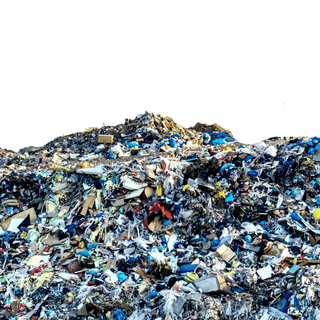The Earth recently experienced a solar storm — a flare of electromagnetic energy originating from the sun. Scientists estimate that we’re set to be hit by many more such storms in the near future, but most people remain oblivious to the effects of the storm, or its existence.
These powerful, invisible energy flares have the potential to disrupt human activity — in the form of interfering with power grids and communication channels — as well as threaten life on Earth.
During a solar storm, the sun emits huge “bursts of energy,” sending a stream of “electrical charges and magnetic fields” towards the Earth. “After a lengthy slumber, the sun is waking up, crackling with activity and hurling blistering pulses of energy into space,” Matthew Cappucci, a meteorologist, wrote in The Washington Post last December, predicting an “uptick in stormy ‘space weather,’ with implications that affect us here on Earth.”
What Capucci meant by the sun “waking up” is that a new solar cycle, named “Solar 25” began in 2020, and is slated to last for about 11 years — with an “uptick” in solar activities expected around 2025. Solar cycles are periodic variations in magnetic activities of a wide range of intensities on the sun’s surface — with each cycle lasting for a minimum of nine, and a maximum of 14 years.
Can solar storms impact human health? Technically, they can. “Interactions between [geomagnetic disturbances] and the autonomic nervous system are likely to induce a cascade of reactions in the body’s electrophysiology that culminate in the collapse of organ functions and death,” Carolina Leticia Zilli Vieira, who authored a study exploring the link between solar storms and cardiovascular diseases in the U.S., wrote in 2019. In other words, solar storms emit harmful radiation that can cause organ damage and, in rarer instances, death.
Related on The Swaddle:
Never‑Seen‑Before Images of the Sun’s Surface Capture Plasma Cells the Size of France
Exposure to radiation from solar storms can also result in radiation sickness, or even cancer. Reportedly, due to radiation exposure, flying a plane during a solar storm can put airplane pilots at a greater risk of developing cataracts, and put any crew-members pregnant at the time at a higher risk of miscarriages. In fact, flight routes are sometimes diverted due to solar storms precisely to guard people against radiation exposure.
However, the closer one is to the Earth’s surface, the more protected they are — suggesting that astronauts are at an even higher risk than people on airplanes. “There are potential health effects for anyone exposed to that high-energy radiation, but actually we are protected because those rays and particles get absorbed into our atmosphere,” Dale Gary, professor of physics at the New Jersey Institute of Technology’s Center for Solar-Terrestrial Research, had explained.
While we may be safe on the earth, the technology we’ve come to rely on might not enjoy the same luxury. Solar storms can interfere with communication and navigation channels by disrupting satellites in their orbits, and even cause entire cities to blackout by crippling power grids. “That can induce currents in our power lines, and when that happens, transformers can blow or power outages can occur,” Gary added. They can also corrode oil and gas pipelines.
Scientists’ ability to predict solar cycles remains quite limited — by the time they can figure out how potent a storm is, it is often just 60-90 minutes from reaching the Earth. Moreover, the field of space weather — which includes solar storms and other occurrences — suffers from a lack of awareness, with scientists noting it’s often not taken seriously. “It is still remarkable to me the number of people, companies, who think space weather is Hollywood fiction,” Caitlin Durkovich, senior director for resilience and response at the National Security Council in the U.S., said in a statement last month.
Nonetheless, governments are beginning to take space weather more seriously in recent years — reportedly, countries like the U.S. and U.K. have invested in ‘space weather forecasting centers’ that monitor threats to power grids, satellites, and even airlines from solar flares. “When I first started on this road and was briefed on space weather I raised an eyebrow… It is much more mainstream and some of the mystification is gone,” Mark Prouse, deputy director of the U.K.-government’s energy department, told the press, adding: “You can now raise it as a risk and not get laughed at.”




